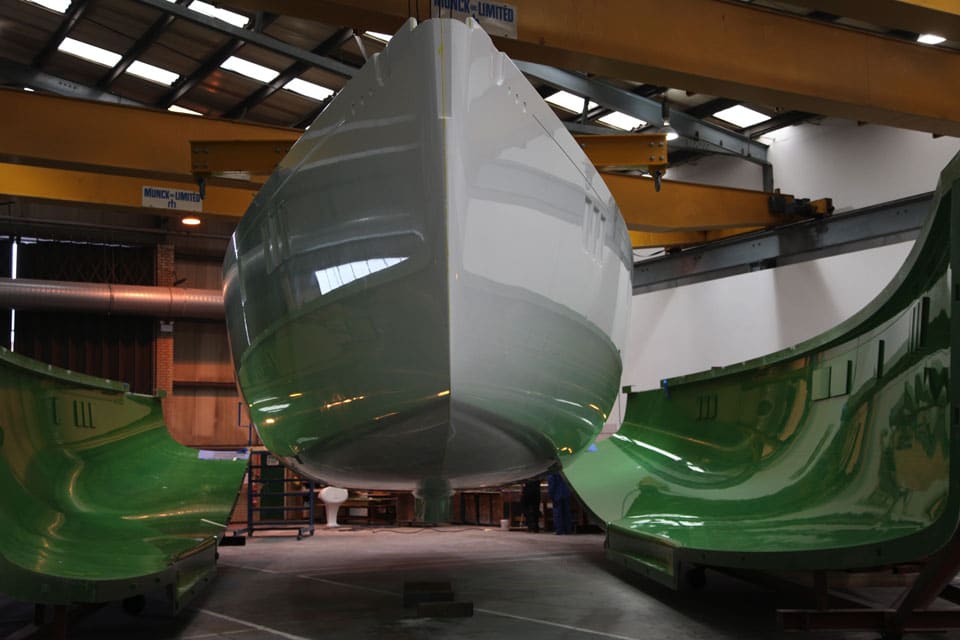
gunfleet-hull.jpg
The first time I saw this photo of the Gunfleet 58 released from its mold, I thought of the late Philip C. Bolger and how he adapted the practical shape of Thames River sailing barges to seaworthy offshore cruising yachts. In his book, Different Boats, International Marine Publishing, 1980, Bolger wrote the following about Manatee—a 33-foot, 6-inch by 7-foot, 8-inch by 1-foot, 6-inch (minimum draft) cat-ketch:
“She’s derived from Thames barges, which actually had hard chines and a perfectly rectangular midship section, but she’s stretched out much finer forward than a barge ever was. It’s been said that barge-type hulls can’t stand a fine bow, but that’s only true if the fineness is carved out of the long mid-body they need to sail on. In this hull, it’s been added on, making her four or five feet longer than a blunt-bowed barge model of similar capacity.”
Manatee, Moccasin and Barn Owl share the barge-style sections amidships. If you sliced each one in half, you’d see vertical topsides, lots of freeboard, a flat bottom, an extremely shallow keel and a tight radius at the turn of the bilges. These boats rely on their form for initial stability and on the high freeboard for reserve stability. Bolger writes:
“A good many people seem to have trouble understanding where these very shallow boats get their stability. Notice that they don’t have and buoyancy deep under water, the kind that floats up and capsizes a deep-bodied boat if her ballast keel drops off. They have the same kind of initial stability as a catamaran of their breadth. Second, if you lay down a straightedge roughly where they’ll float on their sides or upside-down, you’ll see at once that they won’t be stable in those positions and will quickly fall back on their bottoms.”
Among the most endearing qualities of these hulls is the massive amount of truly useable volume inside. The flat bottom allows full headroom all the way to maximum beam and keeps stowage lockers from intruding on floor space in the staterooms and common areas.
By now you’re wondering how Bolger’s designs relate to Tony Castro’s hull for the Gunfleet 58. Manatee and her sisters represent the extreme end of the concept. The hull of the Gunfleet 58 lives at the moderate end. Her underbody is shallow but not flat, and he’s given the turn of the bilges a much wider radius than we see in Bolger’s boats—this in keeping with modern practice for yachts that rely on a ballast keel for ultimate stability. Although her shape won’t permit as much floor space at DWL as does Manatee, it still provides more than you’ll find in a yacht with typical U-shape sections and a narrower waterline beam. Nearly vertical topsides help the design team make the best use of space for stowage and living. A generous amount of freeboard adds to reserve buoyancy when wind and sea knock her onto her beam ends.
Studying the general arrangement plan shows how well Castro and Gunfleet designed the interior.
View more images of the Gunfleet 58 here.









